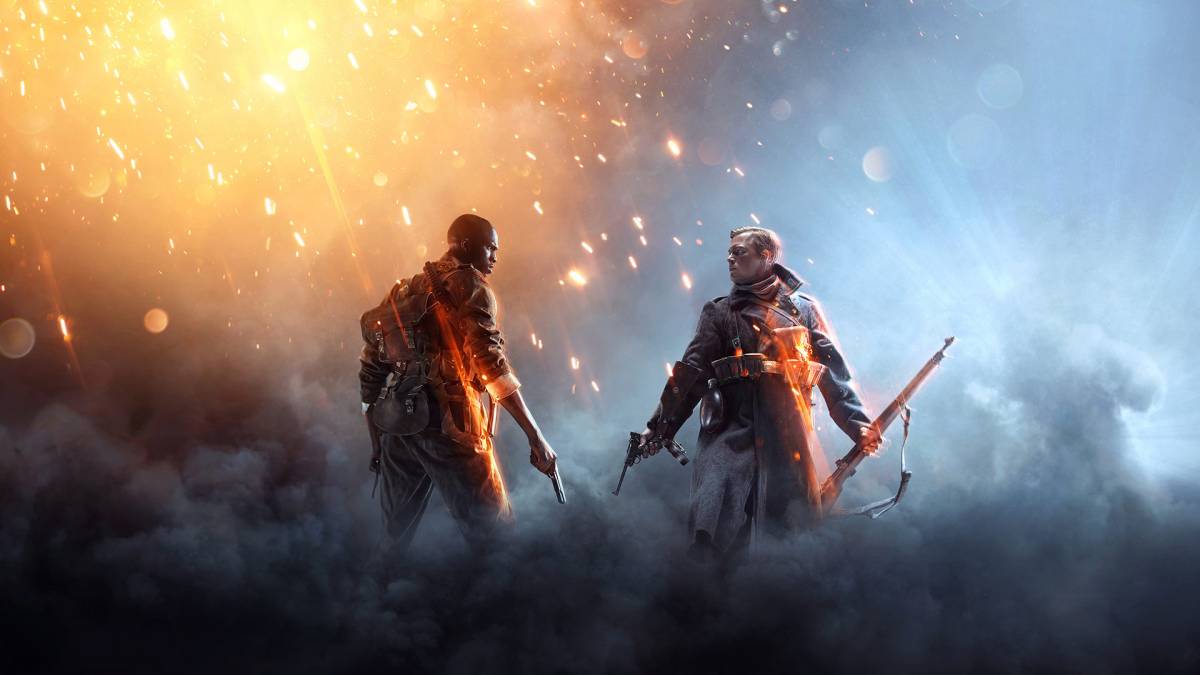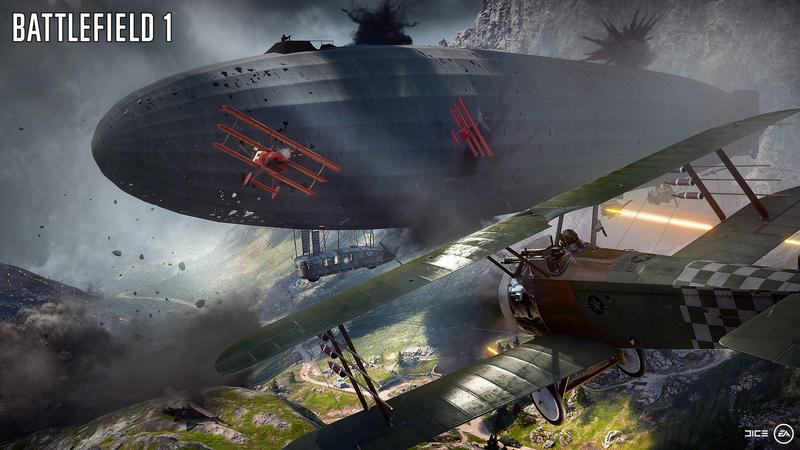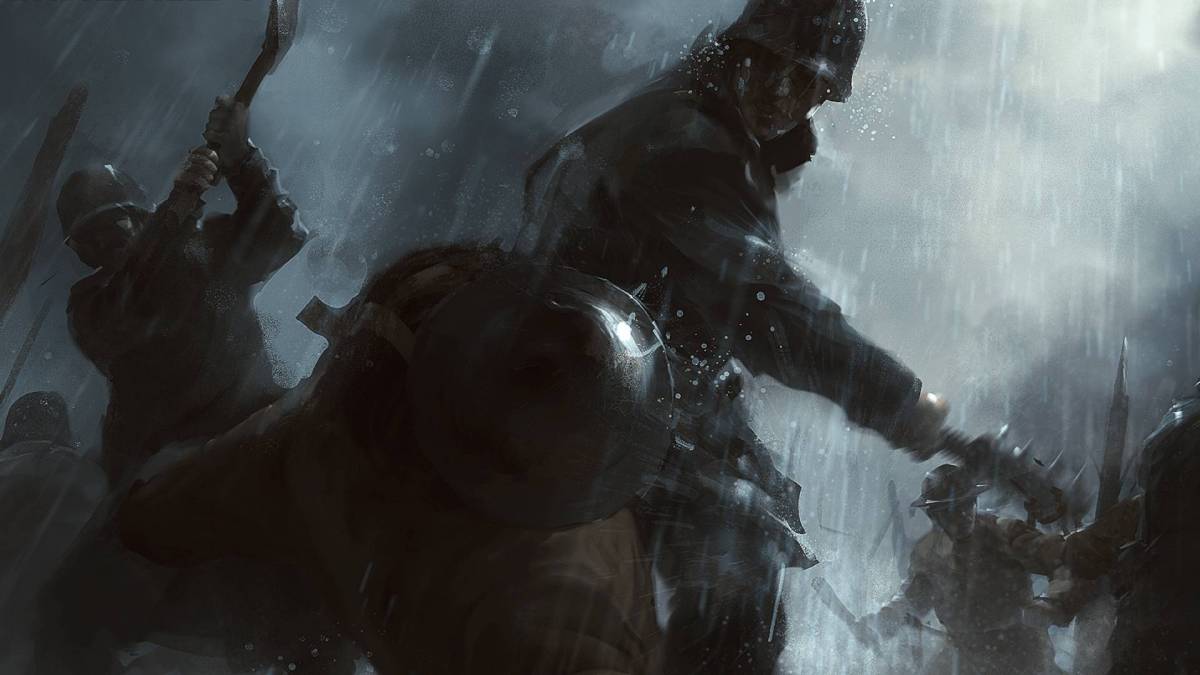Battlefield 1, in many ways, is a groundbreaking game. Not because it’s a video game about war- there have been plenty of those. Certainly not because it’s a polished AAA shooter. Not even because it’s a game about the Great War. Somehow, Battlefield 1 is groundbreaking because it is all those things.
The developers of Battlefield 1 certainly have a lot to be proud of in regards to the single player campaign. It’s a varied campaign, set in many different theatres of war, through the eyes of six different characters. The historicity is, at times, questionable. Overall, at the very least the vignettes, set in locales ranging from Northern Italy to France to Gallipoli and Arabia, are compelling departures from the image of World War 1 as a strictly Western European trench war.
The thing that surprised me about Battlefield 1 wasn’t its diversity or polish, however. What surprised me was what Battlefield 1 reminded me of.

Let me explain: the First World War has a hushed, but nevertheless cemented set of images and literary canon. Many can point to All Quiet on the Western Front and Guns of August. Others might point to some of the chilling poetry that reflected on the war, such as Wilfred Owen’s Dulce et Decorum Est. These works rightly highlight the inhuman horror of war. They describe a sort of alienating, incomprehensible carnage. This is undeniably what people think of when you say the words “World War One.”
Throughout playing Battlefield 1, I was struck by how much the game didn’t remind me of those earlier works. I couldn’t shake the feeling that it was inspired by something a little more contemporary. Finally, I put my finger on it; Battlefield 1, by accident or design, is a war story (or rather, a set of war stories) in a vein very similar to a Vietnam war story: The Things They Carried by Tim O’Brien. I would argue that understanding the connections between Battlefield 1 and The Things They Carried are essential to understanding what DICE is trying to accomplish.
There are two themes and two motifs that strongly tie O’Brien’s work to Battlefield 1. First, Battlefield 1 and The Things They Carried both employ similar motifs in their execution. The narrative use of the “vignette” and a sort of war-time surrealism. O’Brien’s use of the vignette is a little different than Battlefield 1’s use of the device. O’Brien’s narrator is universal while Battlefield 1 shifts narrators. However, in both works each “chapter” as it were, contains self contained stories with vastly different scenarios and settings between chapters. This ultimately serves a sort of impressionistic end, when one reads The Things They Carried or when one finishes playing Battlefield 1 they do not have an absolutely factual sense of when battles happened or what the political conditions leading up to Vietnam or the First World War were. What they do have, on the other hand, is a sort of emotional imprint of what the wars were like and what they meant.

Equally impressionistic is the use of what might be called “wartime surrealism” by O’Brien and Battlefield 1. Obviously Battlefield 1, being a videogame, has its moment of absurdity – immediately I think of the climax of the “Friends in High Places” chapter wherein the protagonist flies his plane into a zeppelin. Similarly, The Things They Carried tells stories that are pretty absurd in and of themselves. For example, O’Brien at one point recalls a legend of a homespun American girl who is smuggled into the war by her boyfriend. Both DICE and O’Brien use legend and hyperbole to highlight the nature of war. As O’Brien says “A thing may happen and be a total lie; another thing may not happen and be truer than the truth.” Salvador Dali said that surrealism was destructive, but I’m not sure if the flames of war were what he had in mind.
We can use these motifs to place some of the stranger anachronistic moments in Battlefield 1. Why are all of these experimental weapons so widespread? Why does this German camp in France have a box full of Italian submachine guns (when the Germans and Italians were on opposing sides of the war)? Why does this rifle have a reflex sight on it (granted reflector sights did exist, but they were almost certainly not used by infantrymen)? The bizarre Zeppelin thing? Why squeeze an armored train into the story of the T.E. Lawrence? All of this is to highlight the technological shock that the First World War represented. The efficiency and power of weapons during the First World War, the actual weapons, destroyed 19th century ideas of war, death, nationhood and citizenship. But maybe to understand that, contemporary gaming audiences have to see something a little more exotic than the bog-standard bolt-action rifle.
There are also overlapping themes shared between The Things They Carried and Battlefield 1. The first being humanism and the second being vulnerability. The most striking difference, I think, between actual World War 1 literature and Battlefield 1 is a sort of perspective on humanism.

Early 20th century literature tends to disarm human agency when it comes to telling the story of the First World War. In stories and poems like Dulce et Decorum Est, people are ground up, cut up, smashed and destroyed before we get to know them. In O’Brien’s work as well as in Battlefield 1, the death and carnage is still present, but the stories themselves are remarkably human. All of the characters, even those we only know briefly have agency, beliefs, fears and skills. DICE themselves have said officially that the stories in Battlefield 1 are ”about people rather than history or battles.” Similarly, Tim O’Brien, in The Things They Carry writes “Any soldier will tell you, if he tells the truth, that proximity to death brings with it a corresponding proximity to life. After a firefight, there is always the immense pleasure of aliveness. The trees are alive. the grass, the soil — everything. All around you things are purely living, and you among them, and the aliveness makes you tremble.” Clearly, O’Brien as well as DICE want to focus on the lives and personalities of the soldiers. Even if the soldiers themselves are fictional and exaggerated, that makes them seem somehow more alive and makes the danger in the story all the more high stakes.
That brings us to vulnerability. The characters in The Things They Carried are relentlessly vulnerable. They’re emotionally vulnerable, scarred by what they’ve seen in war. They’re vulnerable because they don’t know what lurks in the jungle around them. They’re vulnerable because they not always sure if they did the right thing. I would argue that similar themes are on display in Battlefield 1. First person shooters such as Battlefield 1 (and indeed, video games in general) are famous for being power fantasies. Battlefield 1 manages to subvert the fact that your characters are, without exception, one man/woman armies. It does this by introducing ancillary emotional needs and weaknesses to the characters.
The crew of the menacing Mark V “Brown Bess” have to contend with the vehicle’s unreliability. The invincible Italian shock trooper, Luca Cocchiola- who is heavily armored and lugs around a machine gun, Rambo style; loses his brother. Cocchiola is even strips himself of his armor in an emotional scene in which he searches for the remains of his brother, Matteo. Frederick Bishop, a grizzled and no-nonsense narrator is forced into situations he would normally consider too dangerous because of his affection for a younger and inexperienced recruit. Zara, a deadly Bedouin Rebel and the people she represents, is ultimately betrayed by the foreign empire that promised them dignity. Through these story elements, we are exposed to the terror or war and the vulnerability of life, despite the macho first person sensibilities of the gameplay, much the same way Spec Ops: The Line did.
What does this mean? I think it means that Battlefield 1’s single player is ultimately a post-modern war story, written for a young and contemporary audience. It does just an okay job of telling us what World War 1 was factually speaking. However, on a emotional level, it does a great job of telling us what World War 1 means.
Some of the coverage you find on Cultured Vultures contains affiliate links, which provide us with small commissions based on purchases made from visiting our site.

